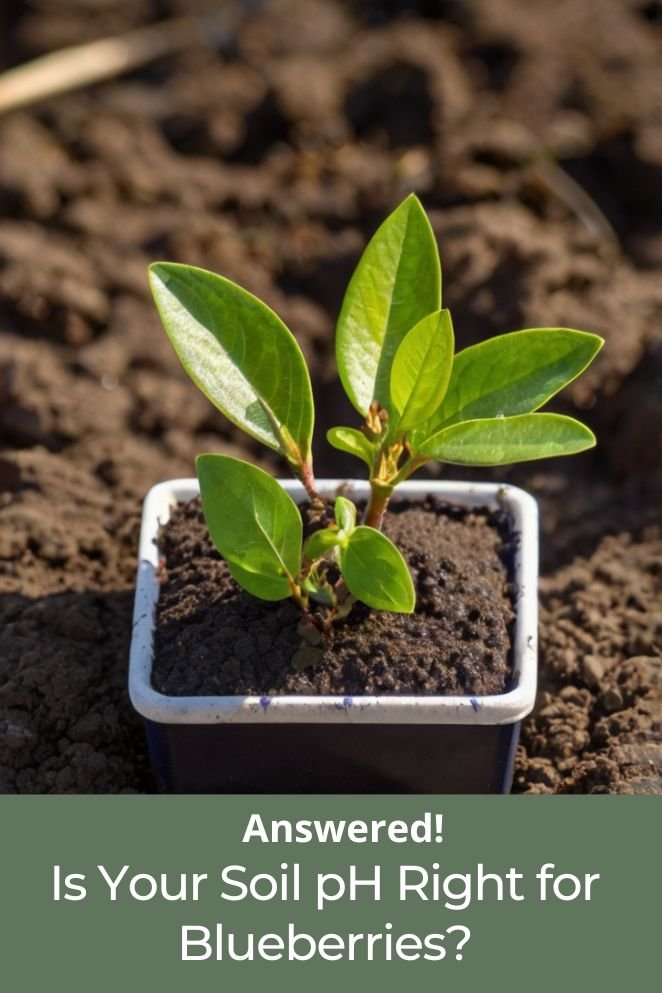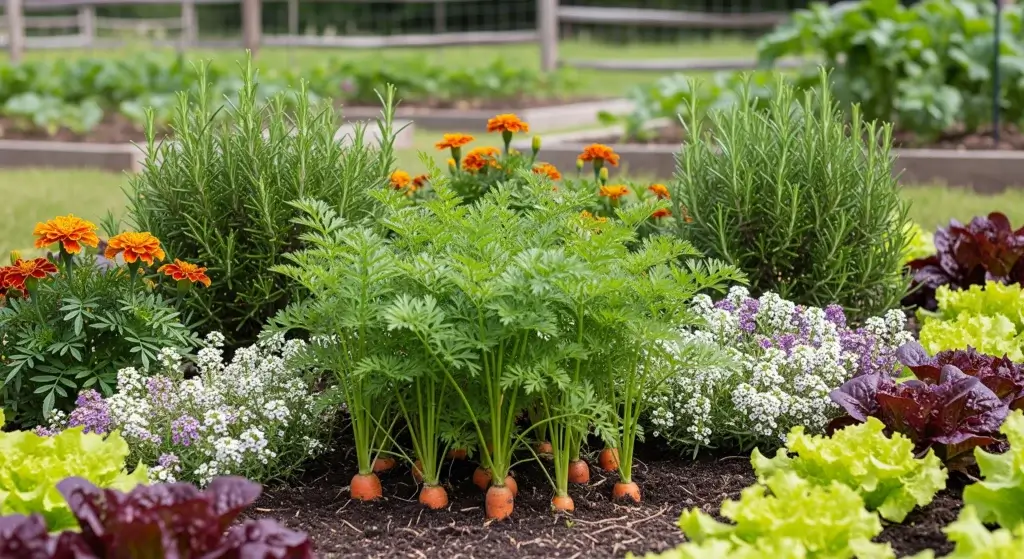
Blueberries are not just delicious; they’re also particular about where they grow best.
One critical factor that determines their health and productivity is soil pH.
In this guide, we’ll delve into why soil pH matters for blueberries, what the ideal pH range is, how to test and adjust your soil pH, and tips for maintaining optimal conditions.
By the end, you’ll be equipped with everything you need to know to ensure your blueberry bushes thrive.
Why is Soil pH Important for Blueberries?
Unlike most plants that do well in neutral or slightly acidic soil, blueberries need their soil to be quite acidic.
This small detail, the soil’s pH, has a big impact on how well blueberry bushes can absorb nutrients, grow healthy, and produce tasty berries.
Here’s why soil pH is so important for blueberries:
Nutrient availability
Blueberries need certain nutrients, such as iron, to grow well.
In soils with a high pH (alkaline soils), these essential nutrients become less available.
Even if the soil contains plenty of nutrients, a high pH level makes it difficult for the blueberry bush to absorb them.
This can lead to a condition called iron chlorosis, where the leaves turn yellow despite there being enough iron in the soil.
This happens because the plant can’t take up the iron it needs due to the improper pH.
- Read also: A Complete Guide: Step By Step on How to Grow Blackcurrants
- Read also: A Complete Guide: Tips on How To Grow Redcurrants
Root health
The health of blueberry roots is also affected by soil pH.
When the pH is too high, it can damage the fine root hairs that blueberries use to absorb water and nutrients.
Damaged roots mean the plant can’t get the water and nutrients it needs, leading to stunted growth and wilting.
Over time, this poor root health can reduce the amount of fruit the plant produces.
Overall plant health
When a blueberry bush can’t get the nutrients it needs because of the wrong soil pH, it becomes stressed.
A stressed plant is more vulnerable to diseases and pests, which can further harm the plant.
Ensuring the right soil pH helps keep the plant healthy and resilient, allowing it to grow strong and produce plenty of delicious berries.

Ideal Soil pH for Blueberries
To grow healthy and productive blueberries, you should aim for a soil pH between 4.0 and 5.0.
This acidic range is perfect for blueberries, allowing them to absorb nutrients effectively.
It also helps their roots develop properly, leading to strong, vigorous plants.
In simpler terms, keeping the soil pH in this range ensures your blueberry plants stay healthy and produce lots of delicious berries.
How to Test Your Soil pH
Testing the pH of your soil is crucial to ensure your blueberries have the best conditions for growth.
You can easily do this using a soil pH testing kit from a garden center or by sending a soil sample to a local agricultural extension service for analysis.
Here’s how you can perform a DIY soil pH test:
Collect soil samples
Take samples from different spots in the area where you plan to plant your blueberries.
Use a trowel or shovel to gather soil from several locations to get a representative sample.
Mix soil samples
Combine the soil samples in a clean container and mix them thoroughly.
Allow the soil to air dry completely.
This step ensures that the moisture in the soil doesn’t affect the pH reading.
Use the testing kit
Follow the instructions provided with your soil pH testing kit.
Typically, you’ll add a small amount of soil to a testing chamber or container provided with the kit.
Then, add the testing solution or insert the pH probe as instructed.
After a specified time, the color of the solution or the digital reading will indicate the pH level of your soil.
Interpret the results
Once you have the test results, you can interpret them based on the pH range suitable for blueberries.
Aim for a pH between 4.0 and 5.0 for optimal growth.
If your soil pH is outside this range, you may need to take steps to adjust it before planting your blueberries.

Adjusting Soil pH for Blueberries
If the pH of your soil isn’t in the ideal range for blueberries (between 4.0 and 5.0), you can adjust it using specific methods tailored to either lower or raise pH levels.
Lowering pH (making soil more acidic)
Using elemental sulfur
Elemental sulfur is a common amendment used to lower soil pH.
It works gradually as it breaks down in the soil, releasing sulfuric acid which lowers pH levels.
The amount of sulfur needed depends on your soil’s current pH and texture.
Generally, sandy soils require less sulfur compared to clay soils.
Acidic organic materials
Organic materials like pine needles, peat moss, and composted oak leaves naturally have acidic properties.
Incorporating these into the soil can help lower pH over time.
For instance, pine needles are particularly effective due to their high acidity.
Application rates
It’s important to follow recommended application rates based on soil test results.
Soil testing labs or extension services can provide guidance on how much sulfur or organic material to add to achieve the desired pH level.
Raising pH (making soil less acidic)
Using lime
In rare cases where soil pH is extremely low (below 4.0), you may need to raise it slightly using lime.
However, blueberries are sensitive to alkaline conditions, so this should be done cautiously and only if absolutely necessary.
Dolomitic lime is often preferred as it also provides magnesium, which may be beneficial depending on soil conditions.
Caution
Applying lime should be done sparingly and with careful monitoring of soil pH.
Over-liming can lead to excessively high pH levels, which are detrimental to blueberry growth and health.

Maintaining Optimal Soil pH for Blueberries
To ensure your blueberries stay healthy and productive over the long term, maintaining the right soil pH is crucial.
Here are some practical steps to help you achieve and sustain optimal soil conditions:
Regular monitoring
Soil pH can change over time due to weather, plant uptake of nutrients, and decomposition of organic matter.
- Testing frequency: It’s recommended to test your soil pH annually, especially before each growing season, or as advised by your local agricultural extension service.
- Testing methods: You can use DIY soil pH testing kits or send soil samples to a lab for more detailed analysis. This helps you understand if adjustments are needed to keep pH within the ideal range of 4.0 to 5.0 for blueberries.
Mulching
Organic mulches like pine bark, sawdust, or composted leaves serve multiple purposes.
- Acidification: These materials naturally release acids as they break down, which helps maintain acidic conditions in the soil beneficial for blueberries.
- Moisture retention: Mulches also help retain moisture, regulate soil temperature, and improve soil structure over time.
- Application: Apply a layer of mulch around blueberry plants, keeping it a few inches away from the stems to prevent rot and encourage root growth.
Fertilization
- Choosing fertilizers: Select fertilizers specifically formulated for acid-loving plants, such as those labeled for azaleas, rhododendrons, or blueberries.
- Nutrient balance: These fertilizers provide essential nutrients like nitrogen, phosphorus, and potassium, tailored to the needs of blueberries while considering soil pH balance.
- Application schedule: Follow recommended application rates and timing based on plant growth stages and soil test results to avoid over-fertilization, which can alter soil pH.
Water Management
Proper watering practices ensure that nutrients remain available to blueberry roots and help maintain stable soil pH.
Consistently moist, well-drained soil is ideal for blueberries.
Irrigate as needed to supplement rainfall, especially during dry periods or when plants are fruiting.
Adjustments over time
- Observation: Monitor plant health and growth regularly. Look for signs of nutrient deficiencies or pH imbalances, such as yellowing leaves or stunted growth.
- Adaptation: Based on soil pH test results and plant response, adjust mulching, fertilization, and watering practices accordingly to maintain optimal conditions for blueberries.

- Read also: Eco-Friendly Fertilizing: How to Use Coffee Grounds as Fertilizer
- Read also: Step by Step Guide: How to Grow Cherry Tomatoes in a Container
Conclusion
Understanding and managing soil pH is essential for successfully growing blueberries.
By maintaining a pH range of 4.0 to 5.0, you ensure that your blueberry bushes thrive, producing delicious berries season after season.
Regular testing, appropriate adjustments, and careful maintenance will help you create an optimal growing environment for your blueberries.
FAQs
Blueberries prefer acidic soil with a pH range of 4.0 to 5.0. Growing them in alkaline soil can lead to nutrient deficiencies and poor growth.
It’s recommended to test soil pH annually, especially before planting new blueberry bushes or making significant changes to your soil amendments.
High soil pH (above 5.0) can lead to nutrient deficiencies, yellowing leaves, and reduced fruit production in blueberries. Adjusting pH downwards using appropriate amendments is crucial.



